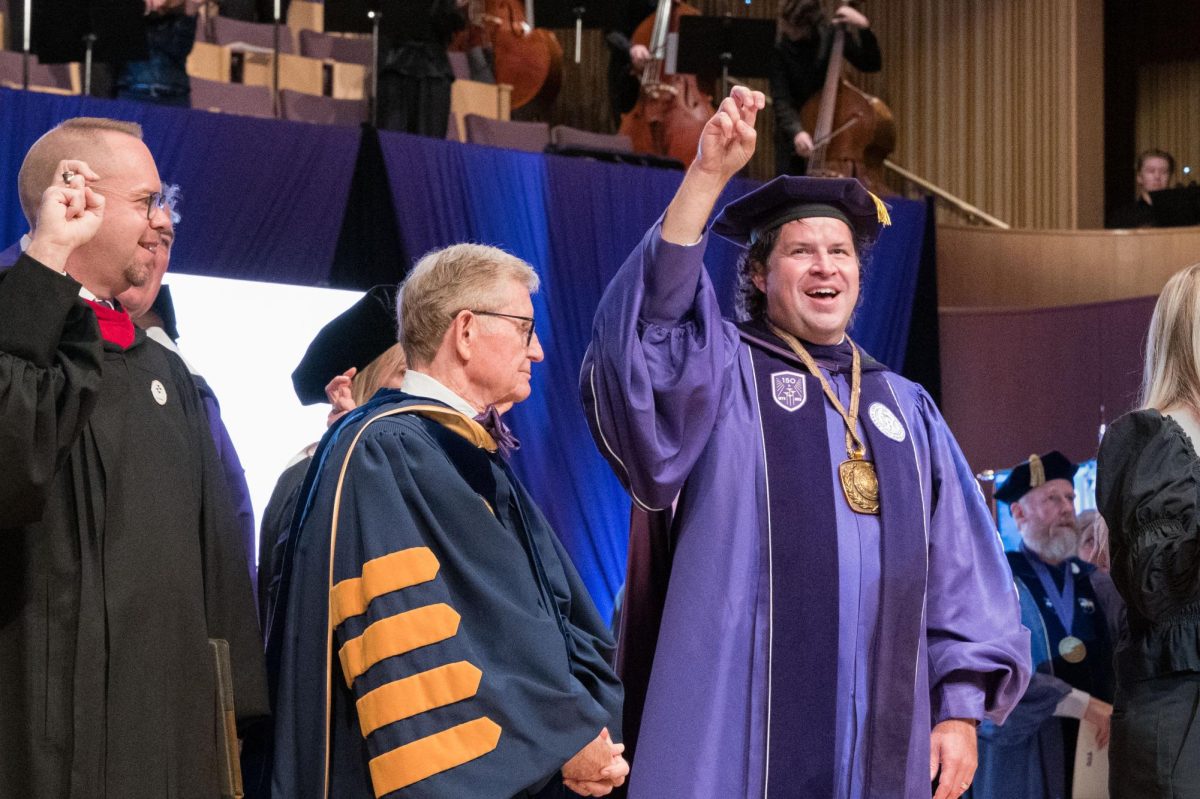The compensation of TCU executives has continued to rank above the university’s peers even as compensation for its faculty and staff has fallen behind.
The percent of expenses devoted by the university to executive salaries ranked 5th out of 67 comparable schools, according to a report by the Faculty Relations Committee.
Twenty executives received compensation that totaled to $11.4 million, according to TCU’s 2017 IRS Form 990 filing cited in the report.
The percent devoted to faculty and staff compensation ranked 64th out of 67.
The report initially concluded in 2019 that TCU’s compensation packages are below average and that the university spends less on wages and benefits than its peers.
Last month, the university announced it was permanently reducing employee retirement benefits to 8% from 11.5% – which sparked considerable faculty concern.
The committee updated the report to account for the cut to retirement benefits and concluded that the reduction “further diminishes TCU’s lackluster compensation packages in comparison to other nationally-ranked private universities.”
Below are visual illustrations of the key parts of the report’s additions, which summarize the committee’s main conclusions – namely the discrepancy between how they compensate executives and faculty.
Note: “Median” refers to the median figure calculated among the 67 private universities ranked in the U.S. News and World Report’s Top 150 National Universities.
Note: “Median of Peer Institution” refers to the median figure calculated among the 10 universities TCU considers its peer: American, Baylor, George Washington, Pepperdine, Santa Clara, SMU, Syracuse, Tulane, Villanova and Wake Forest.
Part 1: A comparison of faculty compensation packages
The report begins by comparing average professor salaries based on 2019-20 data from the American Association of University Professors.
TCU’s salaries rank either below or even with the median of its peers.
Next, the report compares the average retirement contribution pay. It lists TCU’s contributions at both 11.5% and 8% to highlight the impact of the university’s reduction.
The impact of the reduction is clear. At 11.5%, TCU ranked above the overall median and the median of its peers – at 8%, it falls below both.
Faculty Senate Chair Sean Atkinson said before the reduction, TCU’s higher retirement contribution helped make up for lower average salaries and attracted faculty members.
“So when the retirement contribution is dropped, I think Dr. Ledbetter [who helped author the report] is right that that does make us less attractive as a university to potential faculty members and staff members,” he said.
The following graphs show the change in retirement compensation pay ranking that occurred when the university reduced its annual contribution.
The report then compares employees’ total compensation packages to round out the first part of their analysis.
Here, the impact of reducing retirement benefits is seen again. Associate professors go from above the median of TCU’s peer institutions to below it, while full and assistant professors fall further.
“When comparing to the broader set of nationally-ranked private universities, TCU already offers notably lower compensation, and the reduced retirement contribution rate seems to decrease it even more,” the report states.
Part 2: A comparison of university expenses allocations
The second part of the report uses data from the university’s most recently available IRS 990 form (2017) to provide a picture of how expenses are allocated.
Note: The 3.4% of expenses devoted to retirement contributions is from 2017 data, when the university was still contributing 11.5%
The 37.5% of expenses devoted by TCU to non-officer wages and salaries ranked 66th out of the 67 universities in the report.
Non-officer total compensation accounts for 48.1% of the university’s expenses, which ranked 64th out of 67.
Next, the report looked at non-officer compensation as a percentage of all compensation, and not total expenses, to further look at how TCU’s packages compare.
Once again, TCU’s percentage devoted to wages and salaries lags behind the median of its peers.
The amounts devoted to other benefits and retirement contributions, however, each rank in the top 15 of the 67 universities in the report.
The total of all compensation that goes to non-officers, 91.4%, ranked 64th out of 67.
Part 3: A comparison of officer compensations
Looking further into the IRS Form 990 data, the final part of the report looks at how TCU compensates its 20 salary receiving officers.
Among the 67 universities in the study, the 2.12% of expenses that TCU allocated toward its officers ranked 5th.
Only Pepperdine devoted a higher percentage of its expenses to officer compensation among TCU’s 10 peer universities, and none of those 10 had a gross figure higher than $11.41 million.
TCU again ranked 5th in the report with 4.03% of its compensation going toward officers. Only 4 other schools were above 4% in this category.
Conclusion: A noticeable gap
The final illustration in TCU 360’s analysis of the committee’s report uses percentile data to illustrate the difference between how faculty and officers are compensated in comparison to other private universities.
While faculty clearly make up a much higher share of expenses, their 48.1% mark is only in the 4th percentile among the 67 universities in the report.
The officers make up around 2% of all expenses, placing them in the 93rd percentile.
This difference was highlighted extensively in the report and ultimately led to the committee’s conclusion that, “Our salaries, retirement benefit contributions, and combined pay are not competitive across the broad spectrum of nationally-ranked private universities, including our institutional peers and aspirants.”
The committee reiterated the recommendations made in the open letter that was sent out last month in response to the retirement cuts and has garnered over 300 signatures.
The letter calls for the administration to commit to a principle of shared governance and consult faculty on any future decisions regarding their compensation.










